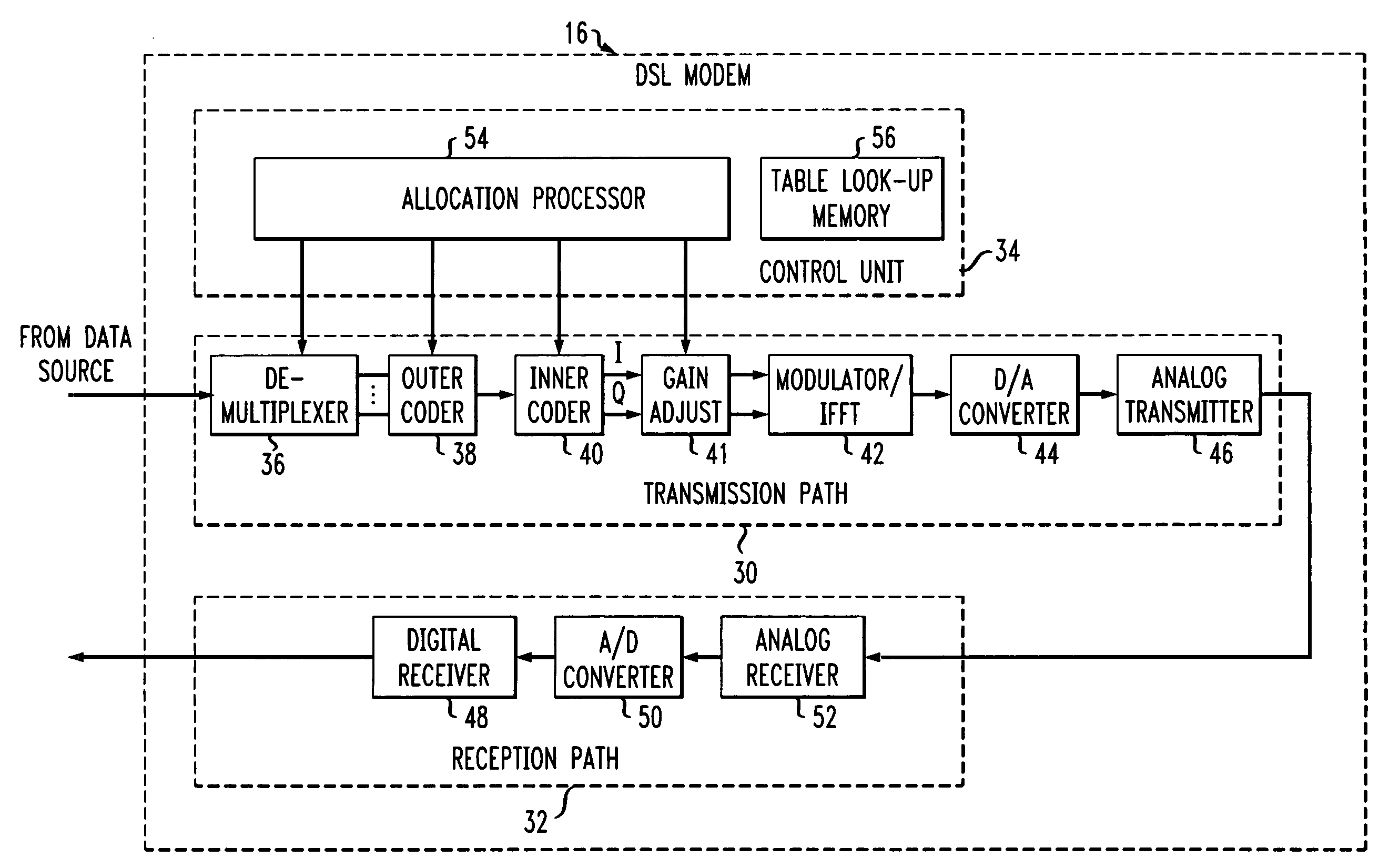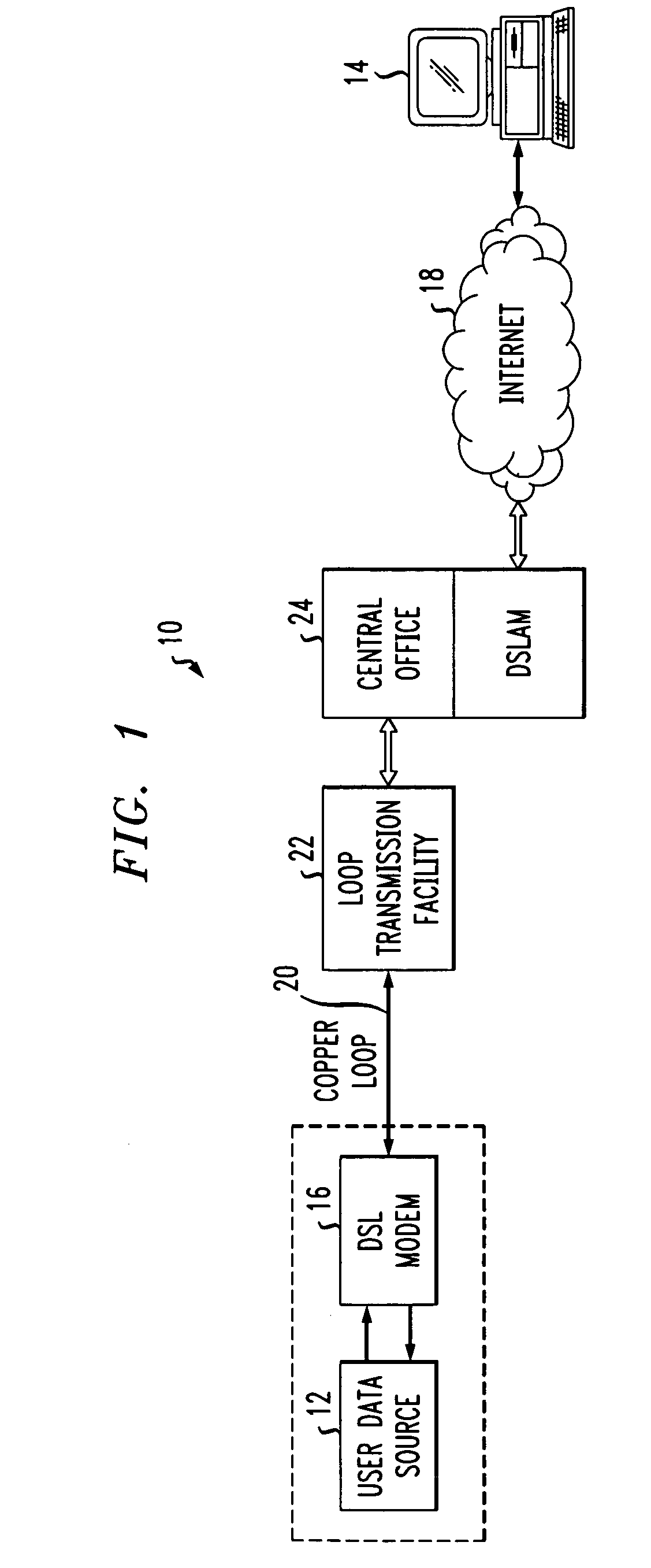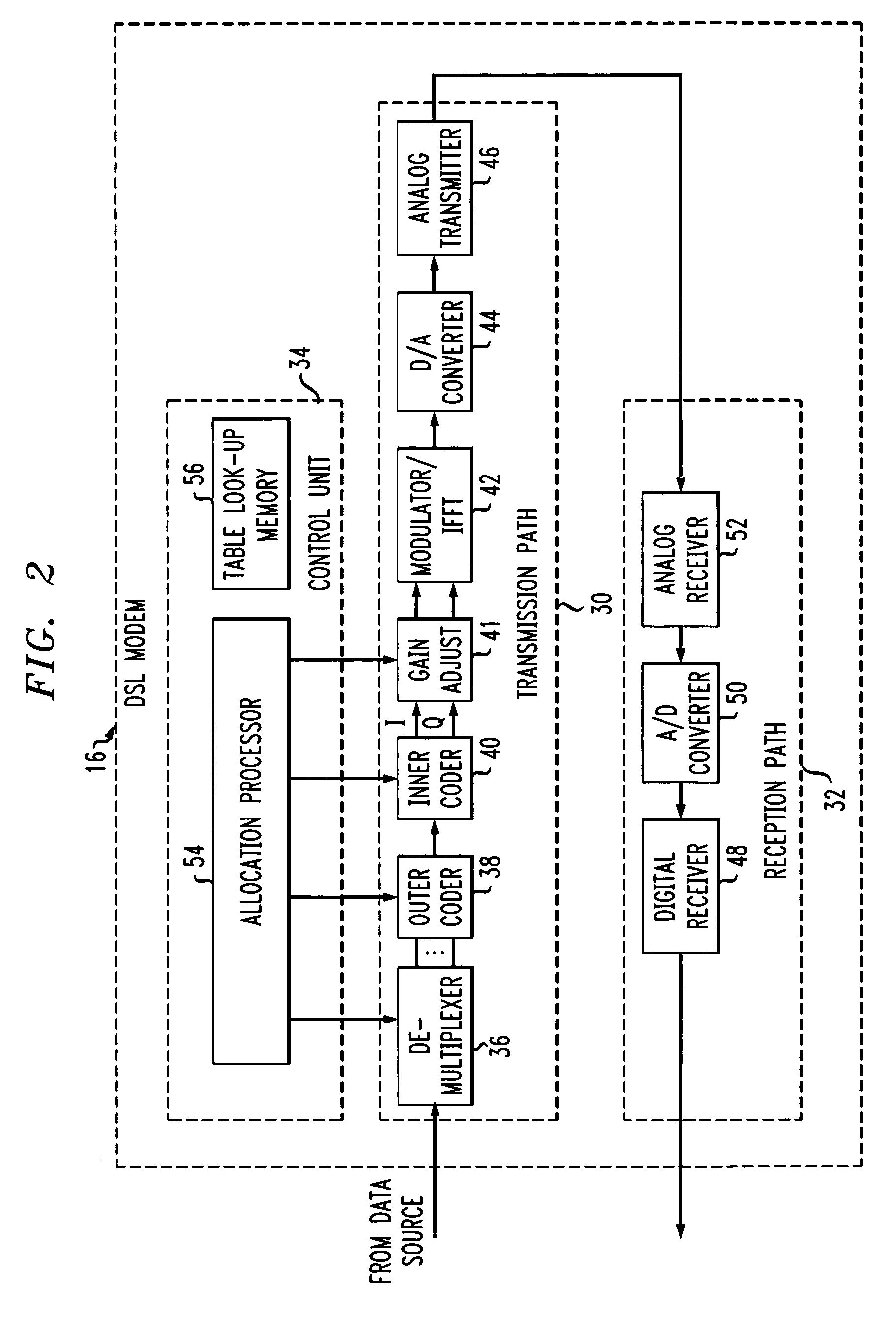Multi-frequency data transmission channel power allocation
a multi-frequency data and power allocation technology, applied in the field of digital communications, can solve problems such as significant increases in data rate, and achieve the effects of increasing data rate, reducing data rate, and transferring additional bits more efficiently
- Summary
- Abstract
- Description
- Claims
- Application Information
AI Technical Summary
Benefits of technology
Problems solved by technology
Method used
Image
Examples
Embodiment Construction
[0025]FIG. 1 shows an exemplary communication network connection 10 in which a modem according to the present invention is employed. In general, the network connection 10 facilitates the flow of data between a user data source 12 and a remote processing device 14. The user data source 12 may suitably comprise a general purpose computer such as a personal computer or the like. The remote processing device 14 may suitably be a web server device, another end-user personal computer, or other internet-capable processing device. By way of example, the user data source 12 may be an ordinary consumer and the remote processing device 14 may be a computer that hosts a commercial website that allows a user located at the user data source 12 to purchase goods or services.
[0026]The user data source 12 is coupled to communicate data bidirectionally with a DSL modem 16. The DSL modem 16 is a device that is operable to communicate data over analog telephone lines using DMT communication techniques....
PUM
 Login to View More
Login to View More Abstract
Description
Claims
Application Information
 Login to View More
Login to View More - R&D
- Intellectual Property
- Life Sciences
- Materials
- Tech Scout
- Unparalleled Data Quality
- Higher Quality Content
- 60% Fewer Hallucinations
Browse by: Latest US Patents, China's latest patents, Technical Efficacy Thesaurus, Application Domain, Technology Topic, Popular Technical Reports.
© 2025 PatSnap. All rights reserved.Legal|Privacy policy|Modern Slavery Act Transparency Statement|Sitemap|About US| Contact US: help@patsnap.com



